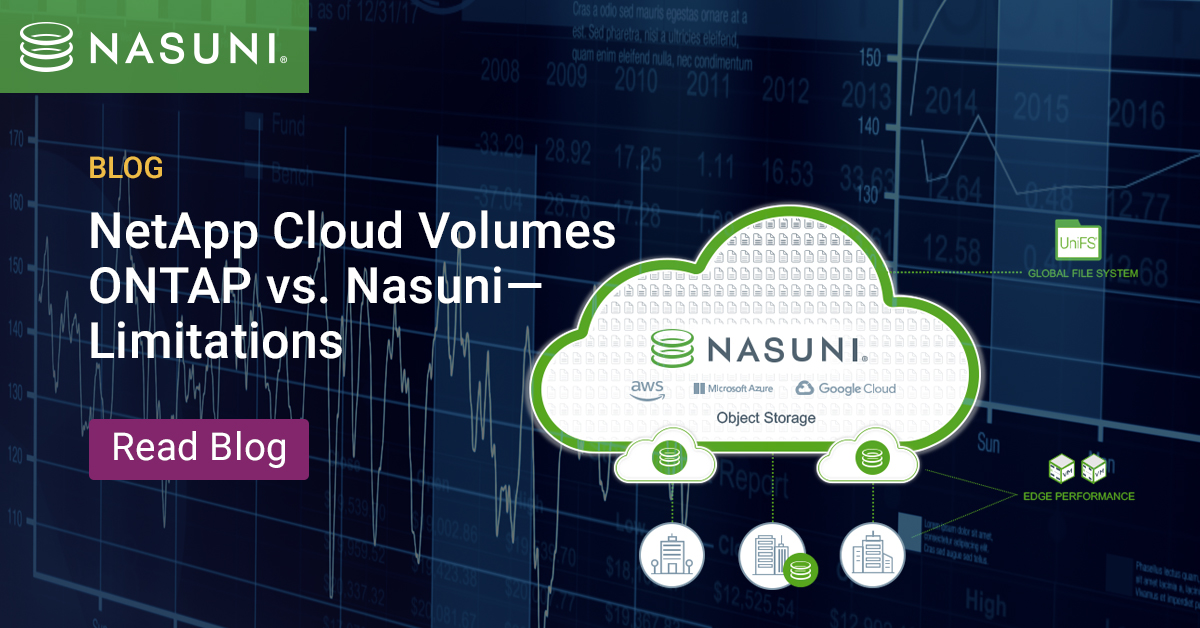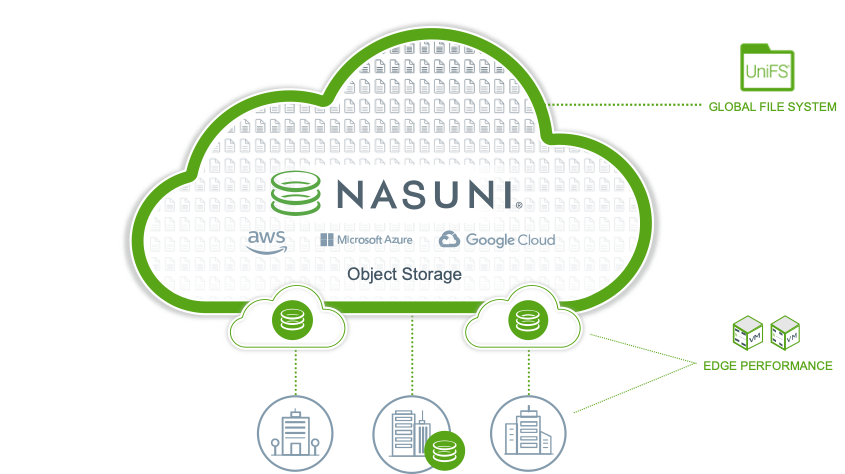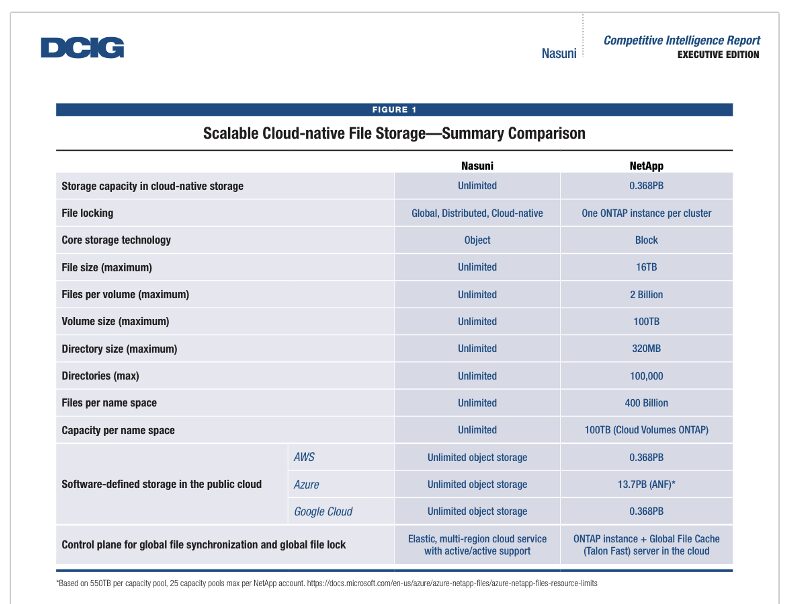NetApp Cloud Volumes ONTAP vs. Nasuni – Limitations
Nasuni’s Tom Rose discusses how NetApp Cloud Volumes ONTAP stacks up to the Nasuni File Data Platform, Part 4.
January 5, 2021

Part 3 in our 4-part blog series comparing NetApp Cloud Volumes ONTAP and Nasuni cloud file storage explained why Nasuni is so much easier to administer than NetApp. In this final blog, we’ll compare the file storage limitations of the two products. You’ll learn why Nasuni is being chosen by enterprises that require capacity on-demand, without constraints on the size or number of volumes, directories, files, or snapshots. We will also discuss restrictions on the number of on-premises and cloud locations where files can be accessed.
The Nasuni File Data Platform: Cloud-Native Architecture
The main reason Nasuni does not share the same limits as NetApp is that all Nasuni components are designed to leverage the cloud.

It starts with Nasuni’s UniFS® global file system, the first file system designed to reside entirely within cloud object storage. With UniFS, file data, metadata, and even the file system’s inode structure are written as immutable objects in your choice of AWS, Azure, or Google Cloud object storage (private cloud object storage solutions are also supported). This design choice enables Nasuni to inherit the durability, scalability, elasticity, and availability advantages of cloud object storage, along with its limitless capacities.
Lightweight VMs called Nasuni Edge Appliances require only enough fast block storage to cache copies of the frequently accessed files from object storage. Using this cache-from-cloud design, the Edge VMs can provide the same high-performance SMB or NFS-based file access as a traditional NAS device or file server on a tiny fraction of the storage footprint (typically 2-5%). The Edge VMs may be deployed on-premises to provide file access at traditional LAN speeds, or in the cloud to provide cloud-hosted file shares. Because more than 98% of file reads come from the Edge VM cache, inexpensive cool tiers of object storage can be used as the single, authoritative source of all unstructured data.
Nasuni’s cloud-native architecture with caching at the edge is the polar opposite of NetApp Cloud Volumes ONTAP, which stores all metadata and inodes for the WAFL file system on costlier cloud block storage (the performance tier), and tiers inactive data to object storage (the capacity tier). This essentially “breaks up” the data into two sources, makes backup and disaster recovery more complex, and makes the entire system more expensive to scale due to NetApp’s dependency on the costlier performance tier.
Because WAFL and ONTAP were initially designed for NetApp’s legacy hardware, not cloud object storage like Nasuni, NetApp’s hardware limits are also brought into the cloud.
Comparison of Nasuni and NetApp Limits

The Data Center Intelligence Group (DCIG), whose analysts examine various cloud, data protection, and data storage technologies to help IT make informed decisions, recently compared Nasuni and NetApp for next-generation cloud file storage. This table from the DCIG report shows how the differences in architectures are reflected in each solution’s limitations.
As the DCIG report explains, “the world of file data has changed. The expanded use of unstructured data in the enterprise has created new dimensions of scalability. Enterprises now capture file data from more sources and in a greater variety of file sizes than in the past. Some new applications create billions of tiny files, while others create individual files larger than 25TB. Nasuni unifies the capabilities of enterprise NAS, backup solutions, and disaster recovery infrastructure by using object storage as its back-end store. The result is a next generation file storage solution that is unlimited, durable, georedundant, and economical.”
Download the full DCIG report “Nasuni vs. NetApp for Next-Gen Cloud File Storage” to learn more.
This brings our 4-part series to an end. In case you missed the first 3, here they are:
- Part 1: NetApp Cloud Volumes ONTAP vs. Nasuni – Product Comparison
- Part 2: NetApp Cloud Volumes ONTAP vs. Nasuni – Costs
- Part 3: NetApp Cloud Volumes ONTAP vs. Nasuni – Administration
If you’re looking to leverage the cloud to modernize your enterprise file infrastructure, we encourage you to compare Nasuni and NetApp for yourself. Take the next step and contact us about a Nasuni Proof of Concept or a business value assessment TCO comparison.